A lifting tape is an indispensable tool crafted to bolster and shield the hands and wrists of athletes during intense weightlifting sessions. This tape is meticulously designed to strike a balance between durability, pliability, and comfort, meeting the exacting standards of weightlifting and powerlifting disciplines. The weightlifting tape market presents a plethora of choices, each tailored to specific lifting requirements, from Olympic lifting tape to hook grip tape, all aimed at augmenting grip and mitigating injury risks.
Types and Characteristics of Lifting Tapes
Exploring the array of lifting tape options reveals a diverse range of products, each with distinctive features. Olympic weightlifting tape, for example, tends to be stiffer to endure the strains of competitive lifting, whereas hook grip tape is crafted to be thinner and more supple, affording a finer tactile connection with the barbell. Weightlifting thumb tape is specifically fashioned to adapt to the thumb's shape, offering support while preserving mobility. Each variant is purposed to either improve grip, shield the skin, or reinforce the wrist and thumb during lifting maneuvers.
Structure and Operation of Weightlifting Tape
The architecture of weightlifting tape is quite intricate. A standard tape for lifting is composed of a fabric foundation, typically cotton or a blend thereof, coated with a pressure-sensitive adhesive. This adhesive is formulated to be resilient enough to remain in place amidst perspiration and abrasion, yet sufficiently mild to be removed without harming the skin. Certain tapes also incorporate a serrated edge to facilitate tearing. The tape's design aims to emulate the skin's natural elasticity, ensuring a full range of motion while providing reinforcement.
Materials and Properties of Lifting Tape
The constituents of lifting tape are selected for their robustness and compatibility with the skin. Cotton offers breathability and a soft touch, while spandex contributes stretchability, enabling the tape to move in unison with the skin. Additions of nylon and polyester may be made for extra tensile strength. The adhesives are engineered to be hypoallergenic and strike a fine equilibrium between adhesiveness and removability. These materials are carefully chosen to guarantee that the weightlifting tape endures through strenuous workouts without causing skin irritation or discomfort.
Business Usages and Applications of Lifting Tape
In commercial environments, lifting tape is vital in venues such as fitness centers, physiotherapy practices, and sports medicine facilities. It serves not only to assist athletes in their training regimens but also as a preventative strategy to avert injuries. In industrial settings, like warehouses or logistics operations, tape for lifting weights can play a role in diminishing the frequency of hand and wrist injuries, potentially curtailing downtime and enhancing productivity. The tape's capacity to stabilize joints and bolster grip can lead to heightened safety and efficiency in labor-intensive roles.
Functions of Weightlifting Tape
The principal role of weightlifting tape is to furnish support and safeguard the hands and wrists during lifting activities. It operates by steadying the joints, securing the grip, and defending the skin against lacerations and scrapes. Moreover, weightlifting thumb tape is specially conceived to buttress the thumb amidst the repetitive hook grip employed in Olympic lifting, which can place considerable strain on the thumb's articulations and epidermis.
Features of Olympic Lifting Tape
Olympic lifting tape is distinguished by attributes such as superior adhesive potency for a steadfast grip and resistance to moisture, ensuring performance is unimpeded by sweat. Certain varieties also possess antibacterial qualities to forestall odors and infections. These tapes are distinctively engineered for Olympic-style lifts, maintaining an optimal balance of flexibility and support where it counts.
Benefits of Using Lifting Tape
The advantages of employing lifting tape are manifold. It not only aids in injury prevention by shielding the skin and stabilizing joints but also can amplify lifting efficacy through improved grip strength. This may translate into more productive training sessions and, potentially, superior lifting outcomes. For those in the throes of recovery from injuries, weightlifting grip tape can offer the necessary reinforcement to gradually resume training without imposing undue stress on sensitive regions.
How to Use Weightlifting Tape
To deploy weightlifting tape effectively, begin by cleansing and drying the intended area. Snip or tear the tape to the required length. Enwrap the tape snugly around the wrist, thumb, or fingers, slightly overlapping each layer for a firm hold. Ensure the tape fits comfortably but is not so tight as to impede circulation. For thumb tape hook grip, encircle the thumb from its base, extending beyond the joint to ensure comprehensive coverage.
How to Choose the Right Lifting Tape
Selecting the appropriate lifting tape entails evaluating the nature of your lifting activities and personal requisites. Take into account the degree of support needed, the fit, and any skin sensitivities that might react adversely to specific adhesives. For strenuous lifting, a thicker, sturdier tape may be in order, while for repetitive tasks, a more pliant, thinner tape could be more suitable.
How to Maintain and Care for Lifting Tape
Although most lifting tapes are single-use, some can be reused with proper care. To preserve the tape, store it in a cool, dry place away from sunlight. If the tape is reusable, lightly cleanse the adhesive side with a moist cloth and let it air dry before storage. Refrain from stretching or folding the tape, as this can weaken its structural integrity.
Is the tape suitable for all skin types?
Weightlifting tape is typically designed to be hypoallergenic and appropriate for all skin types. Nonetheless, individuals with delicate skin should seek out tapes crafted from natural fibers and hypoallergenic adhesives to reduce the likelihood of irritation.
Can the tape be used for injuries?
Although weightlifting tape can offer support to injured regions, it is not intended to replace professional medical care. It should be applied with caution and preferably under the supervision of a medical expert to prevent aggravating the injury.
What are the environmental considerations for disposal?
Environmental considerations are crucial. The majority of lifting tapes are not biodegradable, and users are encouraged to dispose of them responsibly. Some brands provide more eco-conscious options that are less detrimental to the environment and boast a smaller ecological footprint.










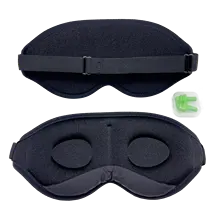





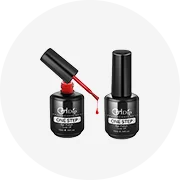
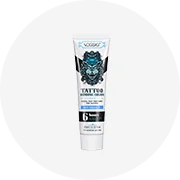



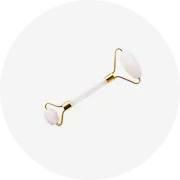

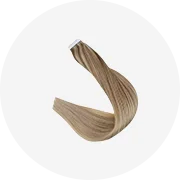
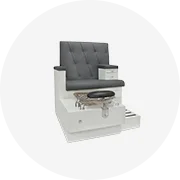










 浙公网安备 33010002000092号
浙公网安备 33010002000092号 浙B2-20120091-4
浙B2-20120091-4